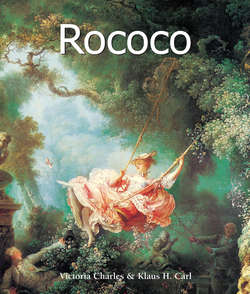Читать книгу Rococo - Victoria Charles - Страница 4
На сайте Литреса книга снята с продажи.
Contemporary History
Music
ОглавлениеThe style and form of the music in France, which hitherto had been determined by Louis XIV (1638–1715), was in lively competition, especially in the operatic sphere, with Italian music; this reached its ultimate peak between 1752 and 1754 in the Buffonist conflict unleashed by Giovanni Battista Pergolesi (1720–1736) with his La serva padrona. Jean-Philippe Rameau (1683–1764) finally pitched into the dispute with his new harmonic theory Treatise on Harmony Reduced to Its Natural Principles, which propelled him to fame throughout Europe. In the ballrooms and on all festive occasions, the graceful minuet reigned supreme.
With his cantatas and oratorios, Germany’s Georg Philipp Telemann (1681–1767), friend of Johann Sebastian Bach (1685–1750) and George Frederick Handel (1685–1759), was one of the great Baroque masters. In England, Handel was still writing predominantly Baroque music, and in Italy the music scene was dominated by Antonio Vivaldi (1678–1741) with his sonatas and violin concertos.
In these restless times in Germany, Johann Sebastian Bach, who was not properly recognized until almost 100 years later, was writing his incredibly comprehensive opus of concertos and chamber music. His sons, already part of the early classical movement, took the music on to symphonies and sonatas, one of the great masters of which was Ludwig van Beethoven, with his concertos, symphonies, sonatas, chamber music and orchestral works. He brought the slowly departing century to a close with his “Rage Over a Lost Penny”. The other grand master was the genius Wolfgang Amadeus Mozart (1756–1791), who also created operas, concertos, symphonies, sonatas and orchestral works. The third in this group of grand masters was Mozart’s friend and fellow Freemasons lodge member Joseph Haydn (1732–1809), who was regarded as the true inventor of the symphony and the string quartet, and who spent a large part of his life far removed from the music scene on the country estate of the Esterházy family.
